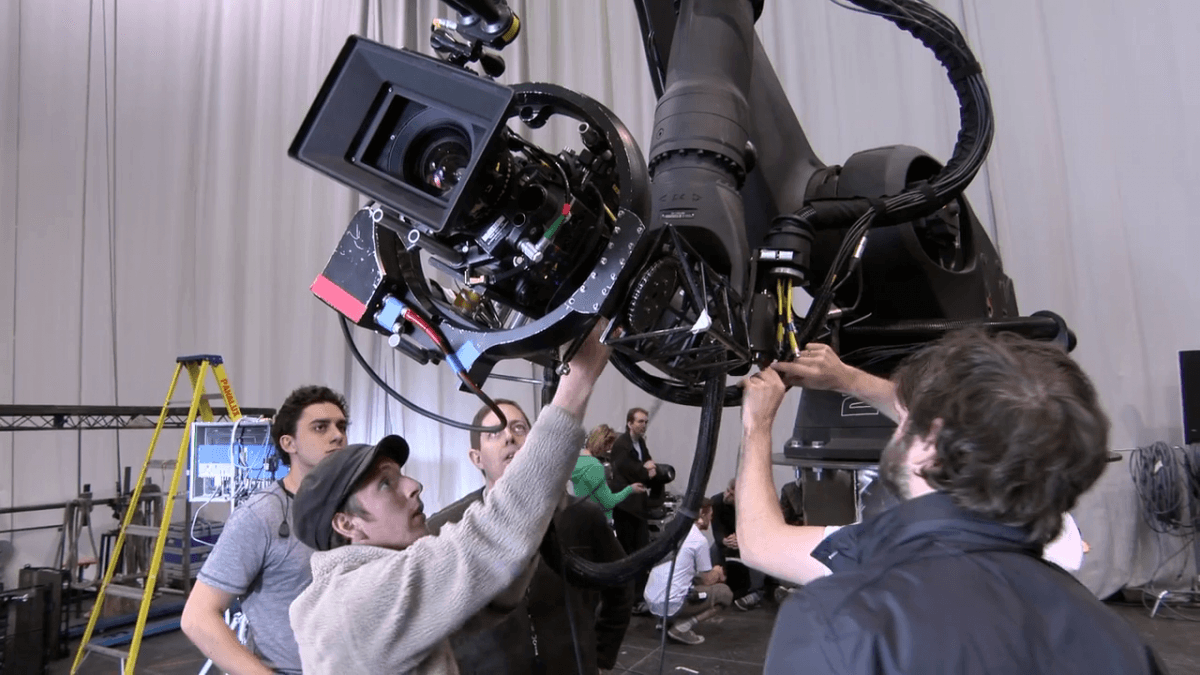
The boundary-pushing, award-winning Sci-Fi epic, Gravity was released 5 years ago this November. To celebrate it's birthday, we have put together an in-depth case study with insights from the crew, a breakdown of the VFX film making from Framestore and a behind the scenes video of our specially designed Mo-Sys Lambda in action.

Gravity cinematographer Emmanuel 'Chivo' Lubezki, can appreciate the advantages of our remote heads with reliability and robustness being the two major keys for high end film productions. After initial tests in San Francisco, Chivo and his team were convinced that the Lambda with its three axes, high precision and zero backlash was the perfect match for the Bot&Dolly - a high precision robotic motion control rig. Following the success of the custom-made Mo-Sys Lambda head for Gravity, we developed our current, industry standard L40 featuring a light weight 2-axis with back-pan option and roll-axis too.
Almost every shot was made with robotic camera heads from Mo-Sys. We used four Mo-Sys heads attached to industrial robots and cranes. For filming in the lightbox we needed a head that reduced shadows on the actors faces. Mo-Sys came up with clever ideas and their reliability and precision was essential for this production.
Emmanuel Lubezki, DoP for Birdman, Gravity
With the ultralight design and the high standard performance and all the features of the Lambda head, the Gravity-head was ideal for the special task and ready to meet Sandra Bullock and George Clooney. Equipped with two customised heads and two regular Lambdas, the Gravity team began filming their technically ambitious project in March 2011. In 2013, Gravity was released to wide critical-acclaim, picking up an incredbile seven academy-awards at the 2014 Oscars.

How did the Gravity crew and Mo-Sys work together?
The story of two astronauts marooned in space is told with the camera. “Generally the camera would be moving instead of the person,” says Tim Webber, the VFX supervisor, who also worked on Avatar. The camera floats around the characters and changes from breathtaking wide shots of space to intense close dialogue shots and back again, often within a few seconds.
This kind of camera work required a system that was able to move the camera freely around the actors without putting them in uncomfortable positions. The complex moves were planned out, choreographed and recorded inside Autodesk Maya and later during production played back by the Bot&Dolly robot. “It’s always difficult to translate these virtual moves into the real world,” explains Olli Kellmann, motion control operator. “These things have to be tested, and there are many factors that could mess up a move on set that have no impact on the virtual camera inside the CG environment. Things like the strength of a motor, and how the acceleration and the gravitational force affect the rig.”
To test the waters, Olli and his colleague, Raul Rodriguez, started playing the moves back with 10% of their actual speed and then gradually pushed it up to the full 100%. The slow-motion playback gave them the time to tidy cables that were in the way and make adjustments when the head reached its limit, which according to Olli was rarely the case - another testament to the strong performance of the Lambda head.
In addition the Mo-Sys head gave Chivo the option to load and playback the pre-designed moves. Although these pre-recorded moves were a crucial part, it was also of great value to have enough flexibility during shooting. “You need to be able to respond to what they want out of a shot” says Webber. Reframing a scene, refining camera moves, and reacting to the timing of Sandra Bullock and George Clooney was only possible with the live-operated Gravity-head.































